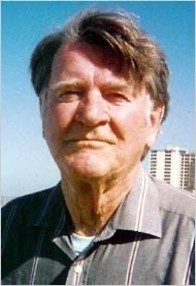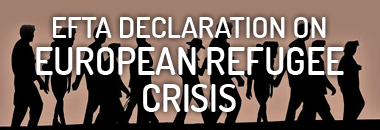EUROPEAN FAMILY THERAPY ASSOCIATION
CONNECTING FAMILY THERAPISTS AND TRAINERS
Jay Haley
(1923-2007) Belonging to the original group of the Palo Alto School,

Umberta Telfener: I met Jay at the Philadelphia Child Guidance Clinic in 1976. In those years he appeared separated from his wife and two women seemed interested in him. Lynn Hoffman and Cloe Madaness. They were both coming to PCGC for seminars and clearly courted him. I once asked him if he had ever gone to couple’s therapy before divorcing and was surprised by his distracted answer: “I don’t trust couple’s therapy”.
In Milano in 1982 or 83 it was decided I would be Haley’s translator at the Milan Center for Family Therapy. He arrived with his wife Cloe Madaness, they were sharing a seminar: the morning was Haley’s turn, the afternoon was Cloe’s. At the beginning they both presented themselves, explaining the structure of the day. When it is Cloe’s turn she started saying: “I will in the afternoon tell you how to be successful in therapy and will utilize some cases where Jay failed, that I managed.” I looked at him, asking for permission to translate what I felt was a symmetrical unrespectful statement. He nodded slightly, his eyes laughed and shaking his head in an Indian way, he seemed to say: “Let this woman win, it’s important for her ”.
Vassilis Charalambopoulos: (This story was told to me by Petros Polychronis, it concerns Haley) Haley sees an African American upper-class family of four. Father is a successful lawyer , mother doesn’t work and looks after the 2 children . The “problem” they came in with is that the older son swears at his mother angrily often and this is distressing and unacceptable for the family .
Haley apparently stays behind the two-way mirror and observes while one of his assistants is working with the family. The family spends some time talking about the problem but can not find any apparent reason for the young boy’s swearing outbursts towards his mother. At some point Haley peaks up the interconnecting phone and asks to talk to his assistant.
He instructs him to stop the session and ask the family to come back in a month’s time. Meanwhile they should just do a ritual, says Haley to his assistant.
When his assistant asks what the ritual is, Haley replies: “The father should give the boy 10 dollars every time he swears at his mum .”
Mauro Mariotti: I met Jay Haley with his wife Cloe Madanes. I think of his interventions of doubling the dollars on the board to make the vomiting go away (1 dollar the first time vomiting, 2 the second, 4 the third…).
I remember their center, the Family Therapy Institute of Washington, and the myth that emanated from there at the time. I wanted to go and work for them. I wrote to him, we had met, he immediately replied in a courteous manner: theirs was a small town, he said, and they certainly had nothing better to offer me than my path. It was 1977. I hung out with him and Cloe on several occasions, together with Carlos Sluzki. The acuteness of his methodologically desecrating observations struck me together with his apparent naivety and his fixation on the change process and on the disappearance of symptoms. As a journalist, he was the one who collected the cinematographic documents of Bateson and Mead’s great works in Bali. He understood Bateson’s fundamental work on the double bind and then the revolutionary scope of Milton Erickson’s work. I don’t forget the way he always began his conferences with his sharp gaze and shy, lanky manner: “The revolution in psychotherapy was born with the transition from the “one” of psychiatrists to the “two” of psychoanalysts to the “three” of systemic . It’s all there” …. I am still grateful to him.



